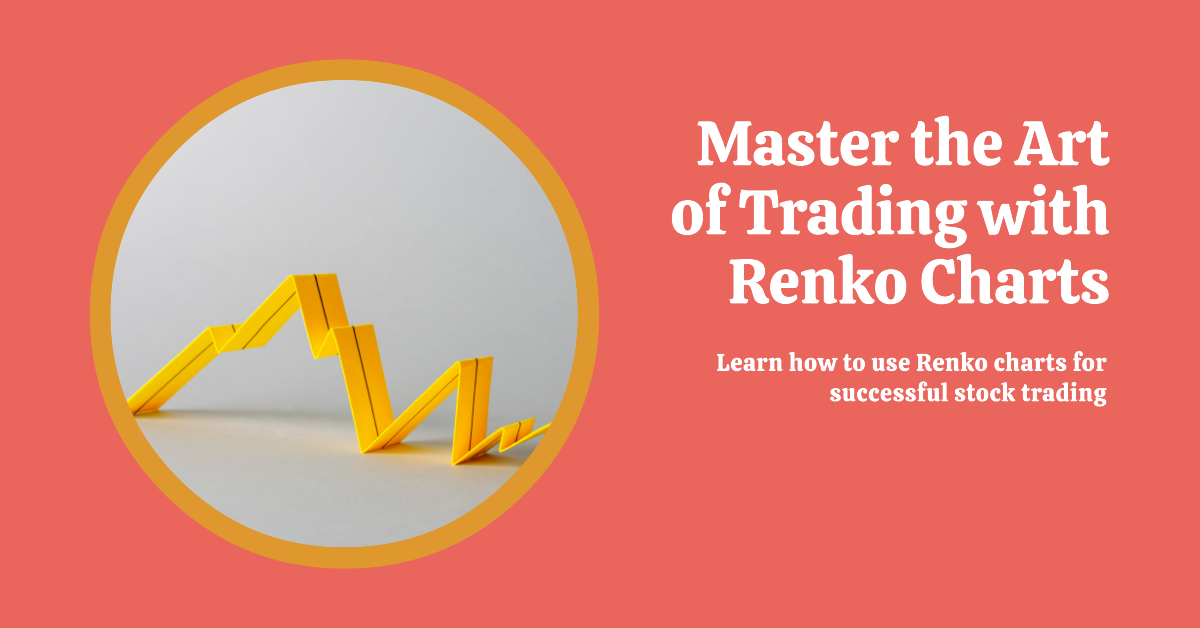Key Takeways
| Renko charts simplify support and resistance detection. |
| Filter out price movements less than the brick size with Renko charts. |
| Utilize Renko charts in combination with RSI for effective analysis. |
| Renko charts exhibit similar patterns to candlestick charts. |
| Identify trendlines and chart patterns for informed trading decisions. |
| Use Renko chart pattern scanner for convenient trading opportunities. |
Advantages of Renko Charts
The most significant advantage of using Renko charts for stock trading is their simplicity. Renko charts are useful for stock trading because they make determining support and resistance levels very simple. Any price movements less than the brick size are filtered out by Renko charts. As a result, we are able to see the trend more clearly.
Since Renko charts are all about how prices move, they can be used on their own to make trading decisions. Once a support or resistance level has been broken, a buy or sell order and, if needed, a stop-loss order can be set. Using Renko charts, you can easily ride out price trends. You shouldn’t exit until you see a reversal. Normally, it is a confirmed box of the opposite color.
Some traders like to use the chart in conjunction with the RSI to forecast the market’s peak or bottom. Typically, they seek price and RSI divergence on the Renko charts. However, when a trend is very strong, the divergence may not be precise. Because the divergence signal emerges too early in the trend, the trade fails.
Ways to Use Renko Charts for Stock Trading
Support and Resistance
Renko charts make it very simple to detect support, resistance, and trendlines. A trade action might be initiated if the support, resistance, or trendline is violated.
An example of a double bottom formation with a purchase signal on a chart is shown below.
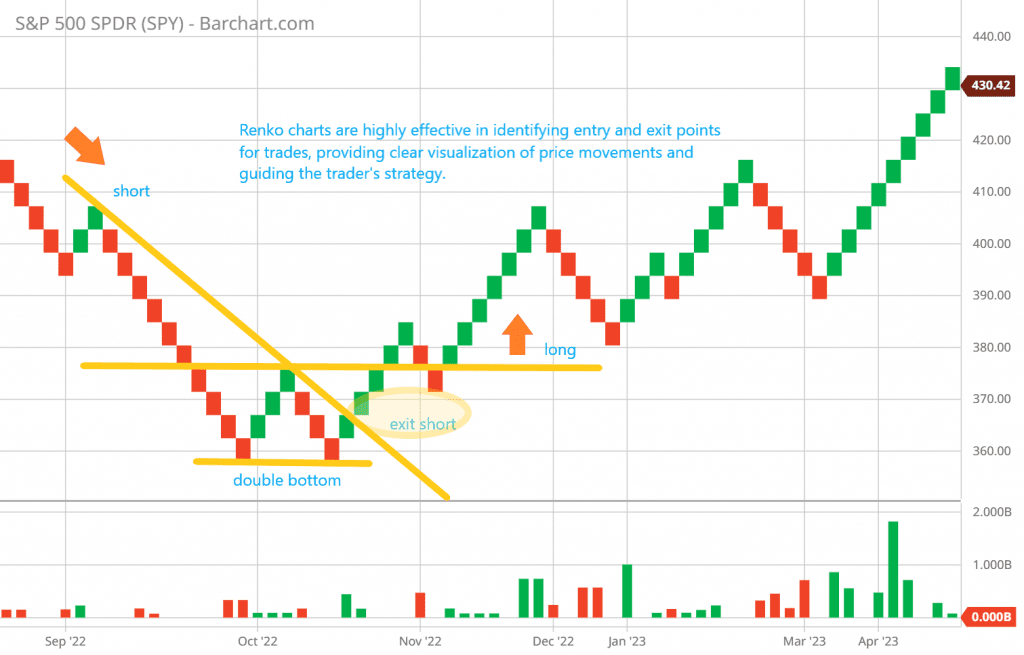
Use Renko Chart Price and RSI Divergence
The RSI might be a useful indicator to utilize in conjunction with Renko Charts, but it might generate a buy or sell signal far too early in a strong trend.
The following is an illustration of the divergence between stock prices and the relative strength index (RSI). However, while divergence is a respectable technical analysis chart pattern, it is not always 100 percent accurate. On the left-hand side of the chart, you can see that the stock price has continued to rise despite the fact that the RSI has reached lower highs.
In this scenario, it is clear that the divergence pattern between the stock price and the technical indicator cannot be the primary factor influencing the decision-making process. Support, resistance, and trend lines should all be applied to the chart as part of the decision-making process when making trading decisions.
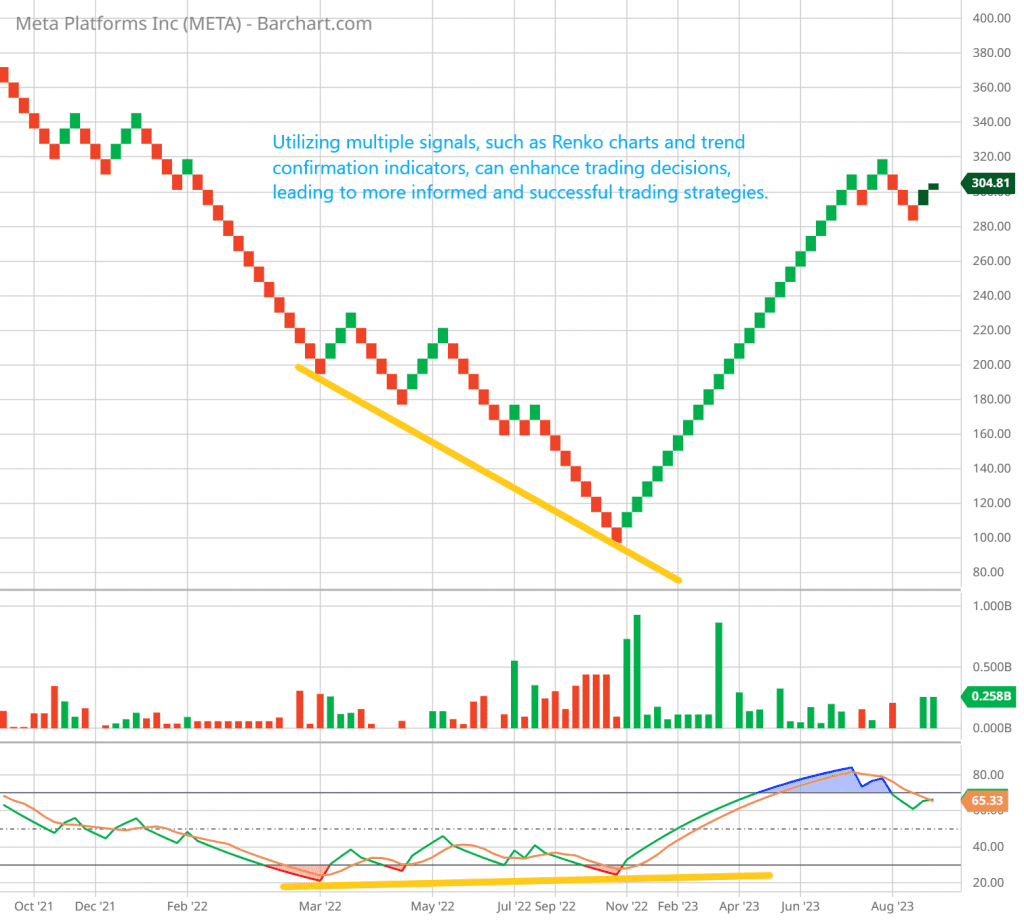
Chart Patterns
Renko charts exhibit the same patterns as candlestick charts, such as double tops or bottoms, head and shoulders, and triangles. Such patterns may be more apparent on a Renko chart since there are fewer small price fluctuations.
Trendlines for a Downward Trend
The downtrend in the EURUSD pair materialized with pronounced clarity as the price decisively breached the crucial support level at 1.0630. This breach signaled a notable shift in market sentiment and set the downtrend firmly in motion. The downtrend persisted, maintaining its momentum until the price eventually found a stabilizing support floor in the vicinity of 1.0500. This phase underlined the market’s persistent bearish sentiment during that period, emphasizing the significance of the breach at 1.0630 and the subsequent struggle for support.
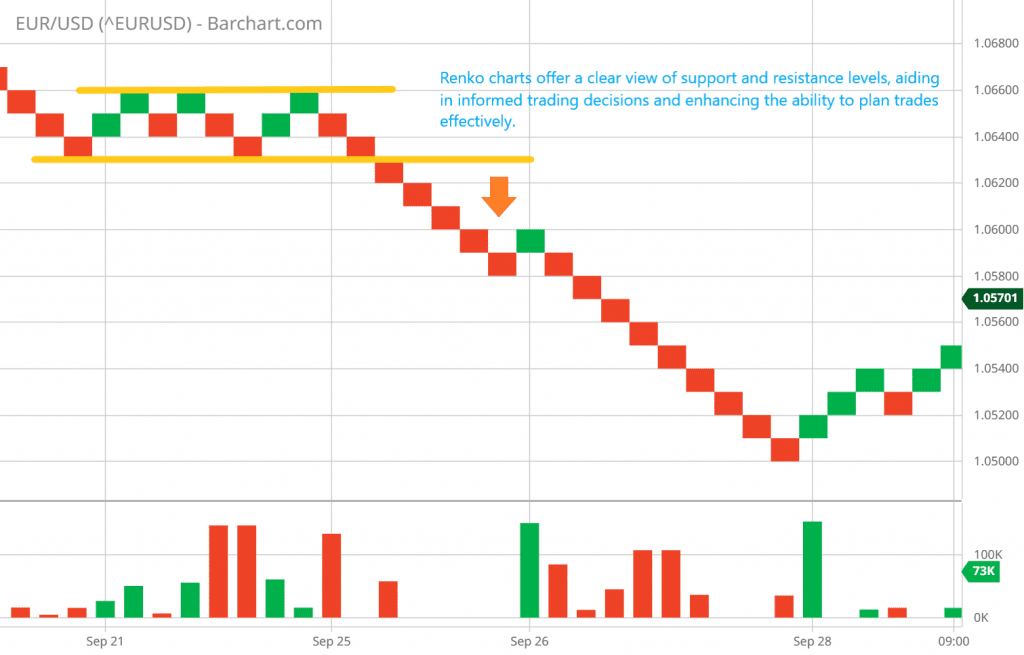
Double Bottom and Reversed Head and Shoulder Patterns
The occurrence of a double bottom at the $190 level initially seemed promising but ultimately proved to be a false signal. It prompted caution, suggesting the need for risk management strategies such as employing a stop order or implementing a protective put when the price dipped below $190, aiming to mitigate potential losses. Following this, a retest of a lower price point at $125 provided validation for the true double bottom formation around $120. Consequently, a strong purchase signal was confirmed, indicating a compelling opportunity to enter the market at this level.
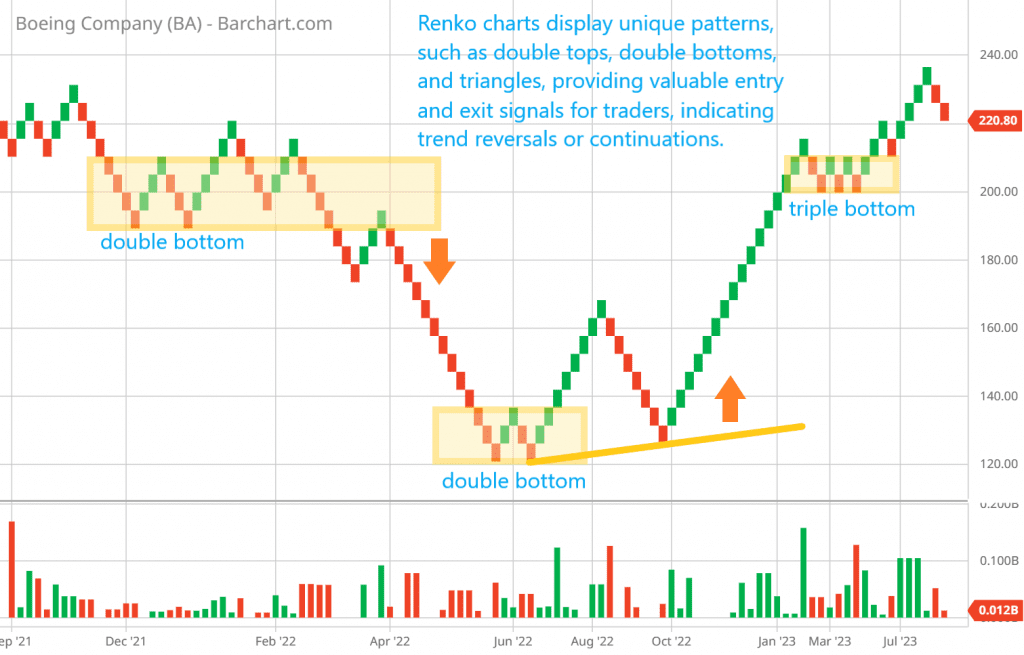
Double Top and Head and Shoulder Pattern
In a notable technical analysis of Bitcoin’s price movement, it was observed that the cryptocurrency exhibited a double top formation around the $65,000 price level. This pattern is characterized by two peaks at a similar price point, indicating a potential trend reversal. However, the critical point in this pattern was the neckline, set at approximately $59,500.
Once the price breached this critical support level, the market saw a relentless downtrend. The breach of the neckline confirmed the double top formation and triggered a sell-off, intensifying the downward momentum in Bitcoin’s price. Traders and investors closely watched this development as it marked a significant shift in the market sentiment and further highlighted the importance of technical analysis in the volatile cryptocurrency space.
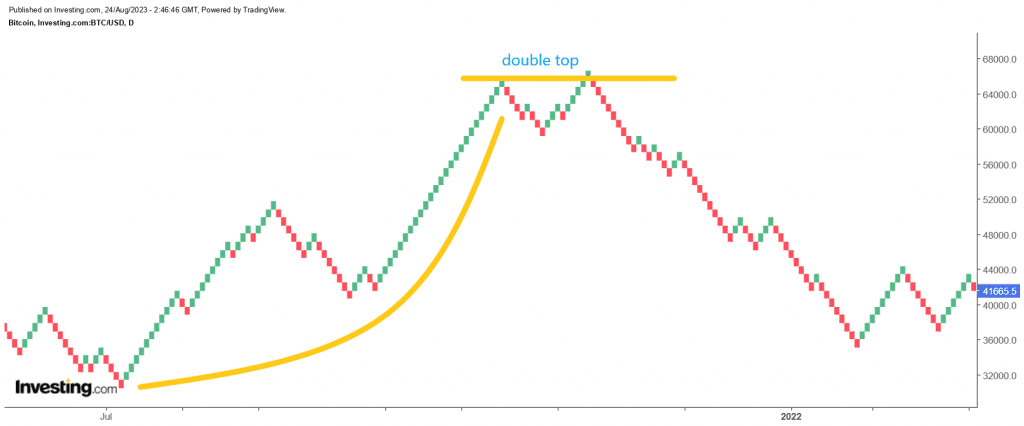
Renko Charts Pattern Scanner
This website provides a free Renko chart pattern scanner to make it easier for traders to find trading opportunities.
